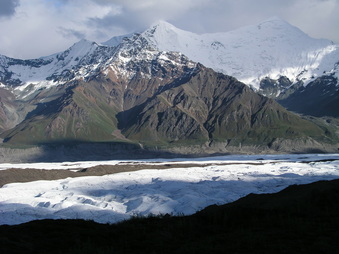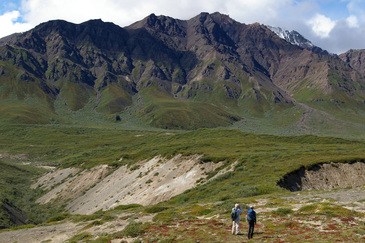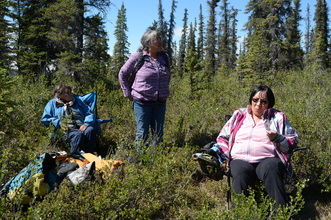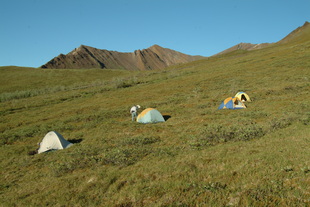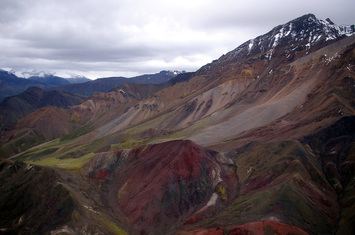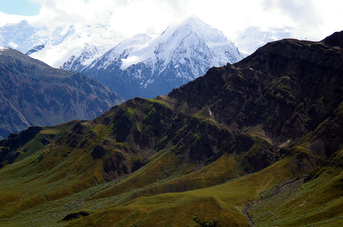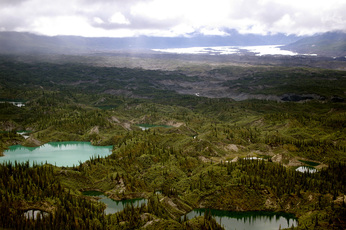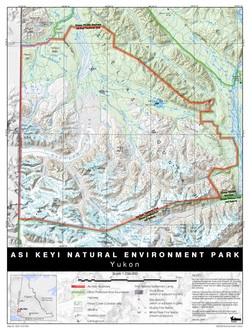Did you know that Mount Bona and Mount Churchill in Alaska were the major contributors to the volcanic ash blanketing much of the park? Mount Bona is also the main source of ice for the Klutlan Glacier.
|
Traditional Homeland
Asi Keyi Natural Environment Park is homeland of the Kluane First Nation and the White River First Nation peoples. Traditional use, family ties and cultural stories of two First Nations are inherent in the land and, today you can still find evidence of hunting and trapping sites, former camps and trails.
|
|
Natural ValuesAsi Keyi Natural Environment Park is within the St. Elias Mountains Ecoregion. This ecoregion is characterized by vast regions of ice fields and high elevation mountain peaks.
|
|
Geographic Description
Asi Keyi Natural Environment Park includes 2984 square kilometers of protected area. The park stretches from the Donjek River west to the Alaska border and from Kluane National Park north to the Kluane Range. The boundaries were established with the signing of the Kluane First Nation Final Agreement.
|
Banner Photo: Glacial ice. YG Photo.
